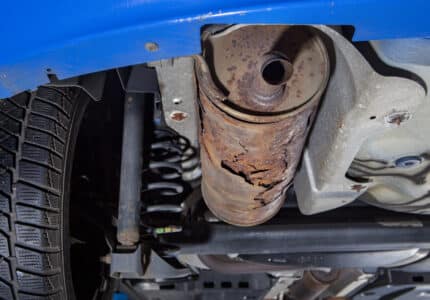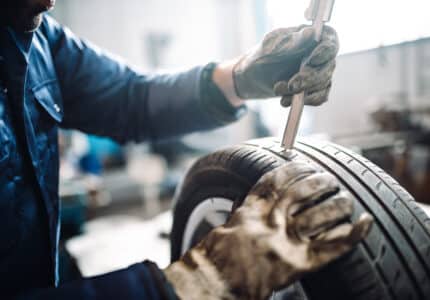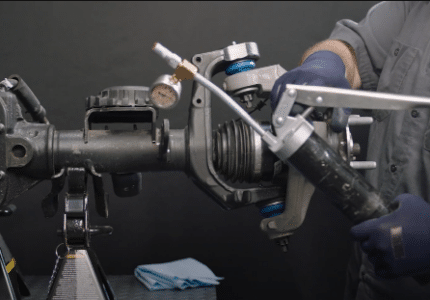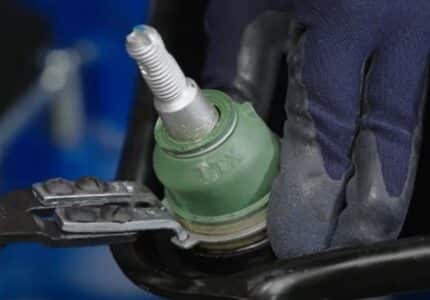Alignment Cross Talk Cures
Most alignment systems walk a technician through an alignment from start to finish. The steps for adjustments are the same sequence no matter the alignment equipment manufacturer. The procedure starts with the rear camber and ends with the front toe.
 Why adjust the camber before the toe? Simple, because one adjustment can influence the other angles. You might have heard it called “cross-talk.” Cross-talk between alignment angles occurs when one adjustment is made, and it changes the other angles. The classic example is how front or rear camber adjustments can change the individual and total toe.
Why adjust the camber before the toe? Simple, because one adjustment can influence the other angles. You might have heard it called “cross-talk.” Cross-talk between alignment angles occurs when one adjustment is made, and it changes the other angles. The classic example is how front or rear camber adjustments can change the individual and total toe.
What happens to the toe when the camber is adjusted? If you were adding positive camber, you are tilting the top of the tire outwards. This can be done by moving the mounting point of the control arms (upper or lower). When the pivot point of the control arm or ball joint changes, the point on the knuckle where the ball joint and outer tie rod or toe link attach also changes. Since the steering rack or box is connected to the body, the toe angles change. You might think the change is small but can be significant when viewed on the alignment bay computer screen.
Rear Adjustments
 Almost every alignment system will start the adjustments at the rear of the vehicle. The system will start with the rear camber adjustments. After the camber adjustments, the system will prompt the technician to adjust the rear toe. If you were to adjust the toe first, the toe angle would change when the camber was adjusted. You would have to adjust the toe again before moving to the front.
Almost every alignment system will start the adjustments at the rear of the vehicle. The system will start with the rear camber adjustments. After the camber adjustments, the system will prompt the technician to adjust the rear toe. If you were to adjust the toe first, the toe angle would change when the camber was adjusted. You would have to adjust the toe again before moving to the front.
Many rear independent suspensions use a multi-link design where one link can adjust the toe, and another will adjust the camber. These designs are notorious for cross-talk between the toe and camber. Take your time.
The alignment system will measure the thrust angle even if the rear toe and camber are not adjustable. The thrust angle will influence the alignment of the front suspension and toe to counteract the thrust angle with some alignment systems.
Front Adjustments
 Like the rear suspension, an alignment system will first have you perform front camber and caster adjustments. After the camber and caster are dialed in, the system will have you adjust the front toe.
Like the rear suspension, an alignment system will first have you perform front camber and caster adjustments. After the camber and caster are dialed in, the system will have you adjust the front toe.
Is it possible that a front toe adjustment can change the camber or caster? Yes, but to a far lesser degree than camber and caster adjustment change toe. But, if you see a significant gain or loss of camber or caster after adjusting the toe, you must inspect the suspension. The cause of camber or caster changes could be due to a bent ball joint or even the shaft of a strut on MacPherson strut suspensions.
Ride Height
 Ride height is the one measurement that greatly influences all the alignment angles. Weak springs can cause changes to the camber, caster and toe in the front and the rear simultaneously. If you have a multi-link rear suspension with weak rear springs, the rear suspension will be lower or more squat. This condition will typically cause negative rear camber and toe (toed out). In the front, the caster will become more negative, and the steering feel will also change. Even if the vehicle has factory or aftermarket adjustment parts installed, the adjustment range will not be capable of bringing the suspension into specification if the ride height is wrong.
Ride height is the one measurement that greatly influences all the alignment angles. Weak springs can cause changes to the camber, caster and toe in the front and the rear simultaneously. If you have a multi-link rear suspension with weak rear springs, the rear suspension will be lower or more squat. This condition will typically cause negative rear camber and toe (toed out). In the front, the caster will become more negative, and the steering feel will also change. Even if the vehicle has factory or aftermarket adjustment parts installed, the adjustment range will not be capable of bringing the suspension into specification if the ride height is wrong.
The most important thing to remember is that you can’t align a vehicle that has worn-out components. The adjustment phase is not the time to find out a bushing is torn or a part is bent. Often, a damaged component can make the cross-talk worse.




